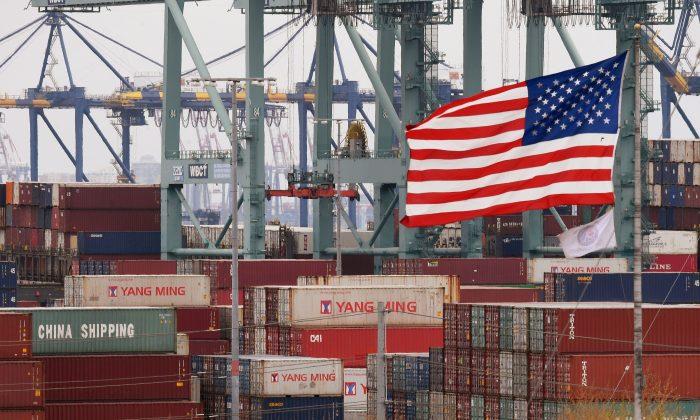The United States has collected some $16 billion in tariffs imposed on Chinese imports by President Donald Trump.
The number is based on duties assessed by the Customs and Border Protection (CBP) by May 1, the agency’s spokesperson said via email.
The tariffs have been imposed gradually since July 6, 2018, on $250 billion worth of annual Chinese imports as Trump tries to squeeze the most favorable trade deal out of ongoing negotiations with China.
Trump has since hiked the tariffs even further after he said the Chinese reneged on a nearly finished deal. China has issued retaliatory tariffs, but since it imports dramatically less from the United States than vice versa, it holds weaker leverage.
Trump has said he will use some of the tariff money to compensate U.S. farmers for losses incurred due to China’s retaliation.
Tariff Timeline
Trump has for years proposed using tariffs as a cudgel to force China and other trading partners into rebalancing trade relations. He’s criticized China in particular for underhanded practices, such as forced technology transfer from foreign companies, theft of U.S. intellectual property, and currency manipulation.Trump’s first tariffs exclusively targeting China went into effect on July 6, 2018—25 percent on $34 billion of goods.
More tariffs hit another $16 billion of Chinese goods on Aug. 23, 2018.
Another 10 percent tariff on $200 billion worth of Chinese goods took effect on Sept. 24, 2018.
Tariffs on the $200 billion in Chinese goods were to increase to 25 percent on Jan. 1, but Trump postponed the hike to give room for negotiations, which, he said, were progressing well at the time.
Yet, as the deal was nearing completion, Beijing backtracked on commitments to change its laws on key issues including forced technology transfer, theft of U.S. intellectual property, and currency manipulation, according to Reuters.
Trump alleged China is trying to wait him out, hoping he’ll lose the 2020 election and the next president will give China more favorable treatment.
Impact of Tariffs
Taxing Chinese products runs the risk of rising prices for U.S. companies and consumers buying the goods, increasing inflation, and suppressing job growth. But neither have materialized on the national level. Inflation has kept tame and unemployment dropped to 3.6 percent in April, the lowest in nearly half a century.The administration went after products with high-import elasticity, which means their buyers are sensitive to price and will likely forgo a buy if the price goes up. In such cases, the impetus is on the seller to keep the price down.
“Contrary to public opinion, the greatest share of the tariff burden falls not on American consumers or firms, but on Chinese exporters,” wrote Benedikt Zoller-Rydzek and Gabriel Felbermayr, authors of the report.
They estimated that, with a 25 percent tariff on $250 billion of Chinese goods, U.S. companies and consumers will see prices of those products going up by less than 5 percent on average, while Chinese firms will have to reduce their prices by nearly 21 percent.
Retaliation
China responded to the U.S. tariffs by imposing its own on $110 billion of U.S. goods. On May 13, China announced it would raise tariffs on $60 billion of U.S. goods from a range of 5 to 10 percent to as high as 25 percent. But China has much less room for escalation, since it only imported some $120 billion of U.S. goods in 2018 and appears slated to import even less this year, based on Census Bureau data.China is buying less soy in an attempt to hurt U.S. farmers, who generally vote Republican, Rapoza argued.
Trump said he will use perhaps $6 billion to $10 billion of the tariff money to subsidize farmers hit by China’s trade measures.






Friends Read Free